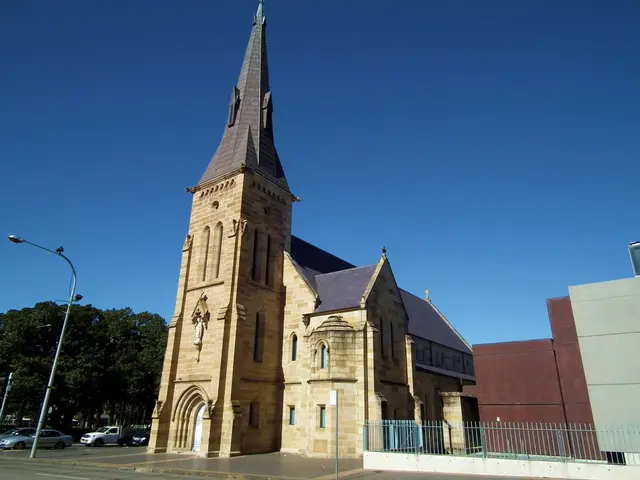Agencies at a federal level take action in the face of Los Angeles wildfires, grappling with budget constraints.
The Los Angeles area is currently battling several wildfires that have devastating consequences, with tens of thousands of acres burned, at least 2,000 structures destroyed, and tragic losses of at least five lives. In response, the Biden administration has mobilized a vast array of resources to aid in the firefighting efforts and support the affected communities.
The United States Forest Service (USFS) is leading the frontlines, deploying five large air tankers, 10 firefighting helicopters, and dozens of fire engines to combat the wildfires. Hundreds of USFS personnel, particularly those combating the Eaton fire in Altadena and Pasadena, are working tirelessly to contain the blazes.
The Navy and Central Command are also contributing, with firefighting helicopters and planes being sent to the region. The Defense Department is sending additional firefighting teams to reinforce these efforts.
The Federal Emergency Management Agency (FEMA) is committed to supporting the state of California and its residents. With $27 billion in its Disaster Relief Fund, recently replenished in December, FEMA currently has 126 personnel on the ground, with numbers expected to grow in the coming days. FEMA's U.S. Fire Administration Chief, Lori Moore-Merrell, and Administrator Deanne Criswell, are also on site, working alongside local authorities.
President Biden has tapped Curtis Brown to serve as the federal coordinating officer for the response to the wildfires. The Environmental Protection Agency also has teams on standby, ready to provide air quality assessments when needed.
The National Weather Service is providing real-time weather updates, including wind patterns that predict fire movement, to aid local authorities in their strategic decision-making.
However, the USFS is operating under a budget crunch. Congress has failed to meet its funding requests, and supplemental spending streams have been depleted. Total Forest Service funding dropped by about 8% in fiscal 2024, and the agency is still operating at that level under the current continuing resolution.
Forest Service Chief Randy Moore acknowledged that the agency is seeing signs of a worn-out workforce. Steve Gutierrez, a former USFS firefighter, stated that the partial hiring freeze for non-fire seasonal positions, which remains in effect, could create strain on operations, although firefighting efforts have not been impacted yet.
In an effort to alleviate some of the financial burden, President Biden has declared a major disaster, making federal funding available for temporary housing grants, repair efforts, low-cost loans, and debris removal. He has also approved Federal Management Assistance Grants, which reimburse state and local governments for firefighting costs.
The Biden administration has mobilized several federal agencies and organizations to support the firefighting efforts in the Los Angeles area, including the U.S. Forest Service, FEMA, and the National Guard. Currently, thousands of personnel from these agencies are deployed, but exact numbers fluctuate depending on the evolving situation.
As the wildfires continue to rage, the united efforts of these agencies and organisations offer hope for a swift resolution and recovery for the affected communities.
Read also:
- Trump administration faces lawsuit by Denmark's Ørsted over halted wind farm project
- Unchecked Management of HP Dams Leads to Environmental Disaster: RTI Reveals
- Rapid advancements in automotive policies worldwide fuel transition towards electric vehicles
- CDU Hamm: Aim, Chosen Candidate, and Local Election Agenda








